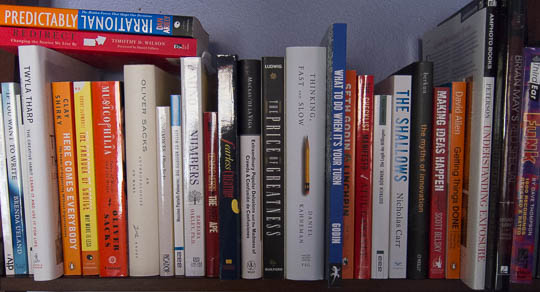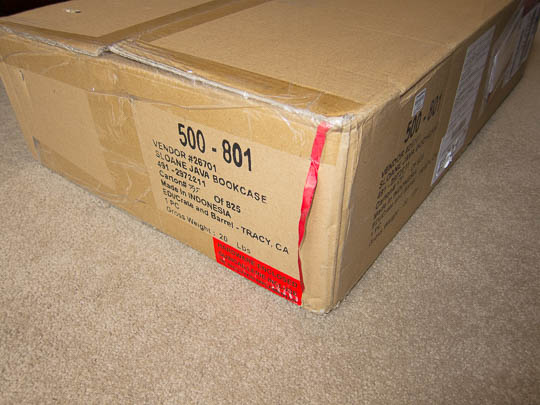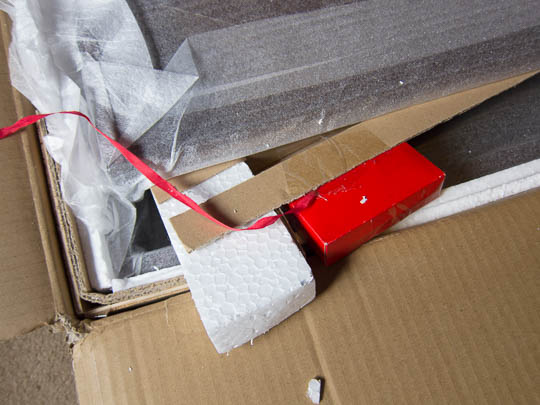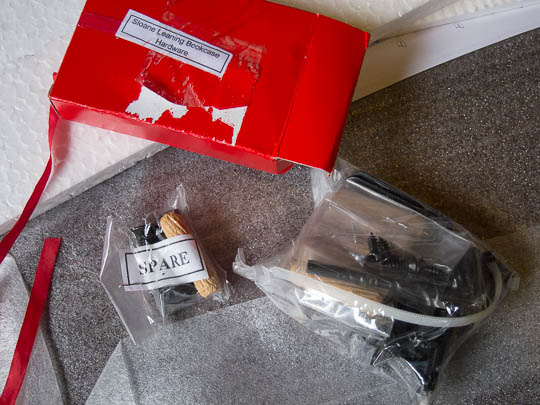People who love books also tend to love book shelves. And, man, do I love books.
Consequently, I occasionally install new shelves when I run out of space after a few too many I-hope-I-find-the-time-to-actually-read-all-of-these book purchases.

The packaging of my favorite shelves sports a nifty feature: Before you even open the carton, you will notice a “very red” ribbon at one of the carton’s short sides. The ribbon’s end is being held in place by a prominent label that says, “Hardware Enclosed.”

There’s treasure at the end of the ribbon
When you follow the ribbon while unpacking the carton, it will lead you to a little cardboard box. That box contains all the hardware required to assemble the shelves.

The box contains two plastic bags, one of which is marked, “Spare.” To properly assemble the shelves, you need to use all of the items that are contained in the other, non-spare plastic bag.
So if you find any left-over screws, nuts, etc. after you complete the assembly, you don’t have to wonder whether these are spares, or whether you made a mistake: Since all spares are in the “Spares” bag, finding any unused mounting hardware always unambiguously means that you screwed up somewhere along the process.

The hardware box is stashed deep inside the shipping carton between all the larger wooden parts and numerous styrofoam filler boards. Including the red ribbon as a guide to that box effectively prevents the user from accidentally overlooking the box and possibly throwing it out with the bigger carton.
User Experience relates to all aspects of the product, however mundane they may seem
Considering this unusual eye for (packaging) detail, it fits into the overall picture that the shelves’ assembly guide is very well-written too, and that the assembly process is very straight-forward as well.
Even with something as simple as a bookshelf you can easily tell whether its designers understand how to create a great user experience, or not. If they do, you will see it in the entire product, and not just in a few details.